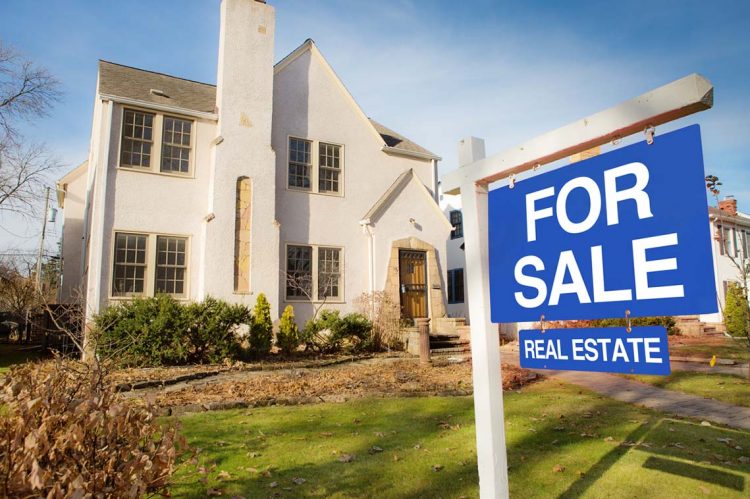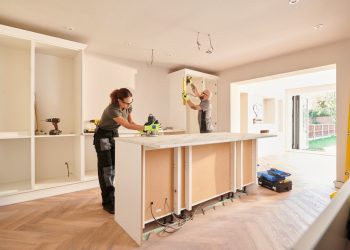Housing inventory recovery made major strides in June, with the number of homes available to buyers climbing at its fastest yearly pace of all time (+18.7%), according to the latest realtor.com® Monthly Housing Trends Report released this past week. Among key factors driving June’s jump in active listings were new sellers, who entered the market at a higher rate than in 2017 – 2019 prior to the pandemic, according to the report.
“Our June data shows the inventory recovery accelerated, posting the second straight month of active listings growth in nearly three years. We expect these improvements to continue, as predicted in our newly-updated 2022 forecast,” said Danielle Hale, chief economist for realtor.com®. “While we anticipate that more inventory will eventually cool the feverish pace of competition, the typical buyer has yet to see meaningful relief from quickly selling homes and record-high asking prices. However, a deeper dive into June’s inventory gains by square footage reveals potential opportunities for move-up buyers, as newly-listed homes skewed larger. In other words, this first wave of supply improvements may be particularly opportune for summer sellers looking to upgrade from their starter homes, which could mean more equity to put toward purchasing a bigger property.”
Hale added, the increase in larger, more expensive homes as a share of new listings is one reason that overall asking prices continue to soar despite moderating demand. In June, homes with at least 1,750 square feet accounted for more new listings (54.3%, up from 52.7% in 2021) than relatively smaller homes (45.7%, down from 47.3% in 2021).
Inventory climbs as buyer demand cools and seller activity rebounds
The inventory recovery from 2021 declines continued to accelerate in June due to the combination of rebounding new listings growth and moderating demand, reflected in recent home sales trends. While still-hot housing competition is motivating more new sellers to list, some buyers are being priced out of the market by rising mortgage rates and record-high asking prices that have driven up typical mortgage payments by 58% from a year ago.
- In June, the U.S. inventory of active listings grew 18.7% year-over-year, a faster pace than last month (+8.0%). However, there are still fewer than half (-53.2%) as many for-sale homes compared to June 2019.
- One factor behind June’s accelerated inventory improvement was pending listings declines (-16.3% year-over-year), which means fewer for-sale homes under contract with a buyer. Additionally, new seller activity rebounded to 1.0% greater than its 2017 – 2019 pace, with new listings up 4.5% year-over-year.
- Compared to June 2021, active inventory increased in 40 of the 50 largest U.S. metros, led by Austin, Texas (+144.5%), Phoenix (+113.2%) and Raleigh, North Carolina (+111.7%) .
- June’s biggest new listings gains were posted in southern markets (+11.0%): Raleigh (+37.6%), Nashville, Tennessee (+37.2%) and Charlotte, North Carolina (+30.1%), as well as Las Vegas, Nevada (+34.8%).
Home shoppers are still snatching up homes quickly, but there are early signs of relief
Despite cooling demand, June time on market trends relative to last year show that buyers continued to snatch up homes at a near-record fast pace. However, month-to-month data tells the beginnings of a different story, with overall time on market growing from May to June for the first time since 2019. Additionally, while homes moved more quickly than in June 2021 across all size tiers, declines were greater among larger for-sale homes. These trends suggest that one potential reason why the overall pace of time on market remains competitive, despite softening demand, could be a shift in the mix of home shoppers, such as an increase in move-up buyers.
- The typical U.S. home spent 32 days on market in June, nearly a full month (-27 days) faster than usual June 2017 – 2019 timing. Time on market held close to May’s record-low, but posted a slightly smaller yearly decline month-to-month (-4 days vs. -6 days).
- Among June’s active inventory, some listings with more square footage, such as those with 3,000 – 6,000 square feet sold faster year-over-year (-8.5 days) than relatively smaller homes like those with 750 – 1,750 square feet (-5 days).
- In June, 34 of the 50 largest markets posted annual declines in time on market, led by southern (-4 days) and northeastern (-2 days) metros: Miami (-22 days), Hartford, Connecticut (-8 days) and Jacksonville, Florida, Orlando, Florida, and Atlanta, Georgia (-7 days).
- Meanwhile, time on market was flat year-over-year in six markets and grew in ten metros, led by Austin (+6 days), Denver and Detroit (+4 days each).
Typical asking prices soar to latest record, reflecting still high seller expectations
Nationally, typical asking prices again soared double-digits over 2021 levels in June, reaching their latest new high, suggesting that many sellers still have great expectations of the market. At the same time, a number of June trends indicate that sellers are beginning to compete for fewer buyers who have more options. Both active and pending listing prices posted smaller yearly gains than last month, while the share of total inventory with price reductions increased.
- In June, the U.S. median listing price hit its latest record-high of $450,000, up 16.9% year-over-year. However, active listing prices posted a slightly smaller gain than last month (+17.6%), as did pending listing prices (to 13.9% from 16.2%).
- Relative to June’s national rate, listing prices grew at a faster annual pace in 15 large markets, led by: Miami (+40.1%), Orlando, Florida (+30.6%) and Nashville (+30.6%).
- Four markets posted year-over-year declines: Pittsburgh (-8.6%), Rochester, New York (-5.9%), Cincinnati (-5.7%) and Buffalo, New York (-2.0%). However, in all of these metros aside from Pittsburgh, the price per square foot grew on an annual basis, indicating that a change in the mix of homes has pushed the median listing price lower.
- The share of total homes with a price reduction grew year-over-year nationwide (+7.6 percentage points) in June, as well as in all 50 but one of the largest metros, most significantly in: Austin (+24.7), Phoenix (+22.2) and Las Vegas (+20.1). Roughly one-in-seven homes in June had a price reduction, up from roughly one-in-13 in June 2021, but still below the one out of every four-to-five that was typical in 2017-2019.
Spotlight On: Condos offer relative affordability in most U.S. counties
Despite recent supply improvements, affordability remains a significant obstacle to homeownership for many Americans. Home shoppers are feeling the strain on their budgets due to higher-than-anticipated inflation, mortgage rates, home and rental prices, down payments and more. In this context, realtor.com® recently compared 2021 home sales trends among single-family homes versus condos to identify potential opportunities for buyers to find relatively affordable housing, with key findings including:
- Nationwide, the typical condo sold for an average of 6.7% less than the typical single-family home in 2021. Location explains this understated trend. Common to crowded big cities where real estate typically comes at a premium, the vast majority (84.1%) of condos were sold in just 6% of counties.
- Drilling down to the county-level in New York, Massachusetts, Illinois and Washington, states with high levels of 2021 condo sales, reveals that condo prices were an average 13.5% lower than single-family homes. In the cities of New York, Boston, Chicago and Seattle, condo buyers paid an average of 33.2% less.
- While these opportunities are driving demand for condos, recent data shows home shoppers may still find relatively affordable condo listings. In June, condos made up 20.2% of active inventory and were listed at 17.5% lower (on average across the 50 largest metros) than single-family homes.
“As big city buyers looked for ways to stay on budget in 2021, our analysis shows opting for a condo offered a solution in some counties. And there may still be opportunities going forward, even as condos’ relatively lower price point is driving up their popularity and prices. If demand leads builders to ramp up condo construction, and the resulting increase in supply may help keep condo prices more manageable than those of single-family homes,” said Hannah Jones, Economic Research Analyst for realtor.com®.












